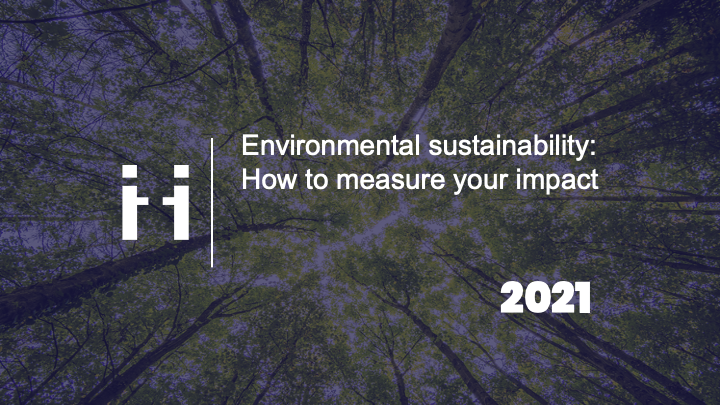
Share this article
Share this article
You have to hold yourself accountable for your actions, and that’s how we’re going to protect the Earth.
Julia Butterfly Hill Tweet
A rise in the Gross Domestic Product (GDP) is referred to as economic growth (GDP). This is due to a growth in economic activity (goods and service production and consumption), which has a greater environmental impact. Increased consumption of non-renewable resources, pollution, and biodiversity loss are all consequences of economic growth.
Economic growth has large external costs for the environment at first. Air pollution and CO2 emissions rise as a result of the use of fossil fuels. Between 1960 and 2014, there was a 60% increase in per capita pollution. Furthermore, pollution of land and water has long-term detrimental consequences and contributes to environmental degradation. Sea levels are rising, and weather patterns are becoming more erratic as a result of global warming. Unchecked population expansion would put a burden on already scarce natural resources.
It is important to note, however, that not all economic expansion is harmful to the environment. Economies rely on coal and other non-renewable energy sources in the early phases of development. Economically developed countries will focus on using renewable energy sources and better technology to reduce their environmental footprint once they have increased their incomes.

Environmental economics is dictated by Kuznets’ curve. According to Kuznets’ curve, economic growth deteriorates the environment up to a point, but after the transition to a post-industrial economy, it helps improve the environment. Economists argue that economic growth and increasing per capita income provide countries with the resources they need to transition to a more sustainable future.
Investing in technological research to build low-carbon technology, switching to renewable resources, and including environmental statistics into the calculation of a country’s growth would be the driving forces behind the transition. The relationship between economic growth and economic sustainability is exemplified the increasing environmental considerations in developed countries that have higher GDP per capita, longer life expectancy, better gender equality, and improved quality of life.
Analysts, on the other hand, have slammed the oversimplified U-shaped curve, claiming that while it may be accurate for some pollutants, it isn’t applicable to less apparent contaminants (like CO2). The polluting industries might simply be relocated from developed to developing and poor countries. Furthermore, it may cause intergenerational issues, as future generations will be responsible for coping with climate change and environmental cleanup.
Economic development needs to be inclusive to encourage long-term sustainable development in line with United Nations Sustainable Development Goals (UN SDGs).
Transitioning to less carbon dioxide (CO2) intensive transportation systems can aid in influencing change in the transportation industry. Companies would not only be able to build long-term supply chains, but can also leverage significant cost savings. Carbon Capture and Storage (CCS) technology can also help meet ambitious climate change goals by reducing emissions.
According to a research issued by the Global Commission on the Economy and Climate, strategic policy actions that promote the change to a low carbon, sustainable growth model might result in economic gains of 26 trillion USD by 2030. To make this transition easier, public and private institutions must work together on a variety of topics, including
i. investing in sustainable infrastructure,
ii. developing new technical solutions, and
iii. focusing on lowering carbon emissions.

Corporate social responsibility makes a substantial contribution to the achievement of essential goals such as sustainable development. In the face of competitors who are increasingly engaging in CSR and sustainability, responsible businesses boost their brand image. CSR efforts are critical contributors to attracting and maintaining talent for organizations.
Corporate social responsibility programs are intended to assist the larger community, promote sustainable environmental practices, and enhance the company’s public image. Businesses can showcase the company’s values to their potential customers. CSR can also help a company’s image in the long run.

1. Attract customers
CSR programs help to set your company apart from the competition. In a congested market, a well-designed CSR program can help your product stand out to customers. Aligning a CSR campaign with the interests and values of customers is a long-term investment in retaining customers.
2. Retain top talent
Employee turnover has been shown to be drastically reduced by CSR programs. CSR not only informs customers about your company’s principles, but it also informs staff. Because CSR initiatives, such as volunteering or fundraising, frequently need employee buy-in, your employees will feel invested in your company’s attempts to make a difference.
3. Attract investors
Investors are becoming more aware of the long-term risks presented by climate change, according to EY. These worries are affecting their investment portfolios, with an increase in renewable energy investments projected. These developments amplify the advantages of investing in sustainable business practices.
4. Stay relevant
More and more companies are investing in CSR and sustainable impact, ignoring these areas would result in a loss of space to competitors.
5. Improve the company’s bottom line
While sustainable techniques may raise manufacturing costs, many customers who identify with sustainability are ready to pay a higher price for the perceived added value.
The word “procurement process” refers to the several steps that a procurement operation goes through. The process by which companies meet their demands for goods and services to produce value while adhering to the principles of sustainable development is known as sustainable procurement. To account for the interests of all stakeholders, organizations attempt to incorporate CSR concepts into their purchasing procedures. Businesses seek to balance profits and societal and environmental sustainability.
1. Preparation of requisition
The drafting and processing of requisition requests kicks off the procurement process. When stocks deplete to a certain level, each department within the organization would fill out a requisition request to request replenishment of items or services.
2. Authorization of request
The procurement department would then review and process the requests while keeping the organization’s best interests in mind.
3. Search of suppliers
To fulfill the procurement order, the procurement department will look for suppliers. Businesses normally have a list of reliable suppliers based on previous orders and can send out a request for quotes. Newer businesses can also post their procurement needs openly and find suppliers through a competitive bidding process.
4. Evaluation and selection of suppliers
Suppliers would be chosen based on their ability to meet quality/ price standards and deliver goods on schedule. Individuals participating in the appraisal process must be free of conflicts of interest, according to companies.
5. Placement of purchase order
Purchase orders would be required, with details on the quality, quantity, price, and delivery timetable.
6. Receipt of goods
The items must be received from the seller and checked to confirm that they meet the order’s quality and quantity requirements.
7. Invoice processing and payment
Payment to the vendor can begin after the products have been received in satisfactory condition.
Businesses would need to establish a code of conduct for their suppliers to ensure adherence to environmental, social, and governance (ESG) norms and set up a sustainable procurement policy.
Local procurement requires businesses to utilize their purchasing power to obtain goods and services from local firms in order to help the local economy flourish. Furthermore, the company would get a slew of other benefits, including increased control and flexibility over its supply chains. Companies would be able to easily reach out to local producers and control order volumes to match market demand variations. Companies would also be able to considerably reduce logistics and transportation expenses while increasing income. Small businesses might also use a piecemeal approach to save money by implementing these techniques.

Local sourcing policies would benefit the environment the greatest. Companies would minimize emissions and energy consumption if they reduced their transportation and storage facilities. It would aid in the development of green manufacturing methods, in which businesses conserve energy and reduce pollution during the manufacturing process.
Furthermore, people are becoming more aware of the environmental damage that giant firms and inefficient manufacturing processes cause. Consumers in the US and Europe are using their purchasing power to support companies that use “clean labels,” which indicate where their products come from. Moreover, green building standards have also been set up to promote the construction of more sustainable buildings. To promote environmental sustainability, societies must ensure that the consumption of natural resources does not impede the ability of future generations to meet their needs.